Citibank 2012 Annual Report Download - page 41
Download and view the complete annual report
Please find page 41 of the 2012 Citibank annual report below. You can navigate through the pages in the report by either clicking on the pages listed below, or by using the keyword search tool below to find specific information within the annual report.-
 1
1 -
 2
2 -
 3
3 -
 4
4 -
 5
5 -
 6
6 -
 7
7 -
 8
8 -
 9
9 -
 10
10 -
 11
11 -
 12
12 -
 13
13 -
 14
14 -
 15
15 -
 16
16 -
 17
17 -
 18
18 -
 19
19 -
 20
20 -
 21
21 -
 22
22 -
 23
23 -
 24
24 -
 25
25 -
 26
26 -
 27
27 -
 28
28 -
 29
29 -
 30
30 -
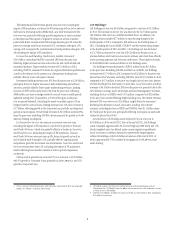 31
31 -
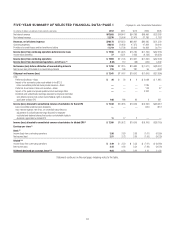 32
32 -
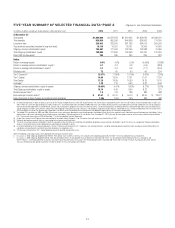 33
33 -
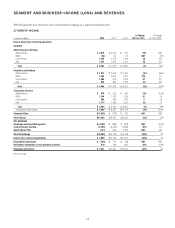 34
34 -
 35
35 -
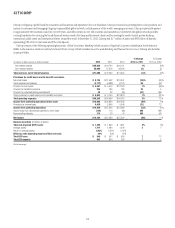 36
36 -
 37
37 -
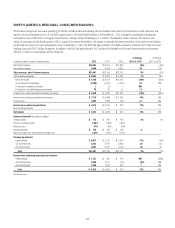 38
38 -
 39
39 -
 40
40 -
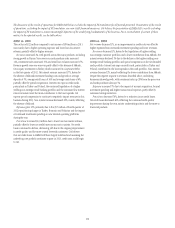 41
41 -
 42
42 -
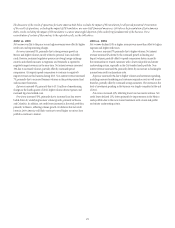 43
43 -
 44
44 -
 45
45 -
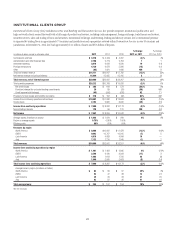 46
46 -
 47
47 -
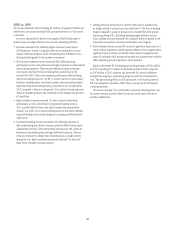 48
48 -
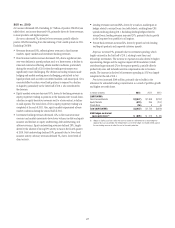 49
49 -
 50
50 -
 51
51 -
 52
52 -
 53
53 -
 54
54 -
 55
55 -
 56
56 -
 57
57 -
 58
58 -
 59
59 -
 60
60 -
 61
61 -
 62
62 -
 63
63 -
 64
64 -
 65
65 -
 66
66 -
 67
67 -
 68
68 -
 69
69 -
 70
70 -
 71
71 -
 72
72 -
 73
73 -
 74
74 -
 75
75 -
 76
76 -
 77
77 -
 78
78 -
 79
79 -
 80
80 -
 81
81 -
 82
82 -
 83
83 -
 84
84 -
 85
85 -
 86
86 -
 87
87 -
 88
88 -
 89
89 -
 90
90 -
 91
91 -
 92
92 -
 93
93 -
 94
94 -
 95
95 -
 96
96 -
 97
97 -
 98
98 -
 99
99 -
 100
100 -
 101
101 -
 102
102 -
 103
103 -
 104
104 -
 105
105 -
 106
106 -
 107
107 -
 108
108 -
 109
109 -
 110
110 -
 111
111 -
 112
112 -
 113
113 -
 114
114 -
 115
115 -
 116
116 -
 117
117 -
 118
118 -
 119
119 -
 120
120 -
 121
121 -
 122
122 -
 123
123 -
 124
124 -
 125
125 -
 126
126 -
 127
127 -
 128
128 -
 129
129 -
 130
130 -
 131
131 -
 132
132 -
 133
133 -
 134
134 -
 135
135 -
 136
136 -
 137
137 -
 138
138 -
 139
139 -
 140
140 -
 141
141 -
 142
142 -
 143
143 -
 144
144 -
 145
145 -
 146
146 -
 147
147 -
 148
148 -
 149
149 -
 150
150 -
 151
151 -
 152
152 -
 153
153 -
 154
154 -
 155
155 -
 156
156 -
 157
157 -
 158
158 -
 159
159 -
 160
160 -
 161
161 -
 162
162 -
 163
163 -
 164
164 -
 165
165 -
 166
166 -
 167
167 -
 168
168 -
 169
169 -
 170
170 -
 171
171 -
 172
172 -
 173
173 -
 174
174 -
 175
175 -
 176
176 -
 177
177 -
 178
178 -
 179
179 -
 180
180 -
 181
181 -
 182
182 -
 183
183 -
 184
184 -
 185
185 -
 186
186 -
 187
187 -
 188
188 -
 189
189 -
 190
190 -
 191
191 -
 192
192 -
 193
193 -
 194
194 -
 195
195 -
 196
196 -
 197
197 -
 198
198 -
 199
199 -
 200
200 -
 201
201 -
 202
202 -
 203
203 -
 204
204 -
 205
205 -
 206
206 -
 207
207 -
 208
208 -
 209
209 -
 210
210 -
 211
211 -
 212
212 -
 213
213 -
 214
214 -
 215
215 -
 216
216 -
 217
217 -
 218
218 -
 219
219 -
 220
220 -
 221
221 -
 222
222 -
 223
223 -
 224
224 -
 225
225 -
 226
226 -
 227
227 -
 228
228 -
 229
229 -
 230
230 -
 231
231 -
 232
232 -
 233
233 -
 234
234 -
 235
235 -
 236
236 -
 237
237 -
 238
238 -
 239
239 -
 240
240 -
 241
241 -
 242
242 -
 243
243 -
 244
244 -
 245
245 -
 246
246 -
 247
247 -
 248
248 -
 249
249 -
 250
250 -
 251
251 -
 252
252 -
 253
253 -
 254
254 -
 255
255 -
 256
256 -
 257
257 -
 258
258 -
 259
259 -
 260
260 -
 261
261 -
 262
262 -
 263
263 -
 264
264 -
 265
265 -
 266
266 -
 267
267 -
 268
268 -
 269
269 -
 270
270 -
 271
271 -
 272
272 -
 273
273 -
 274
274 -
 275
275 -
 276
276 -
 277
277 -
 278
278 -
 279
279 -
 280
280 -
 281
281 -
 282
282 -
 283
283 -
 284
284 -
 285
285 -
 286
286 -
 287
287 -
 288
288 -
 289
289 -
 290
290 -
 291
291 -
 292
292 -
 293
293 -
 294
294 -
 295
295 -
 296
296 -
 297
297 -
 298
298 -
 299
299 -
 300
300 -
 301
301 -
 302
302 -
 303
303 -
 304
304 -
 305
305 -
 306
306 -
 307
307 -
 308
308 -
 309
309 -
 310
310 -
 311
311 -
 312
312 -
 313
313 -
 314
314 -
 315
315 -
 316
316 -
 317
317 -
 318
318 -
 319
319 -
 320
320 -
 321
321 -
 322
322 -
 323
323 -
 324
324
 |
 |
19
The discussion of the results of operations for EMEA RCB below excludes the impact of FX translation for all periods presented. Presentation of the results
of operations, excluding the impact of FX translation, are non-GAAP financial measures. Citi believes the presentation of EMEA RCB’s results excluding
the impact of FX translation is a more meaningful depiction of the underlying fundamentals of the business. For a reconciliation of certain of these
metrics to the reported results, see the table above.
2012 vs. 2011
The net loss of $22 million compared to net income of $84 million in 2011
was mainly due to higher operating expenses and lower loan loss reserve
releases, partially offset by higher revenues.
Revenues increased 2%, with growth across the major products, including
strong growth in Russia. Year-over-year, cards purchase sales increased
12%, investment sales increased 15% and retail loan volume increased 17%.
Revenue growth year-over-year was partly offset by the absence of Akbank,
Citi’s equity investment in Turkey, which was moved to Corporate/Other
in the first quarter of 2012. Net interest revenue increased 17%, driven by
the absence of Akbank investment funding costs and growth in average
deposits of 5%, average retail loans of 16% and average cards loans of 6%,
partially offset by spread compression. Interest rate caps on credit cards,
particularly in Turkey and Poland, the continued liquidation of a higher
yielding non-strategic retail banking portfolio and the continued low interest
rate environment were the main contributors to the lower spreads. Citi
expects spread compression to continue to negatively impact revenues in this
business during 2013. Non-interest revenue decreased 20%, mainly reflecting
the absence of Akbank.
Expenses grew 12%, primarily due to the $57 million of fourth quarter of
2012 repositioning charges in Turkey, Romania and Pakistan and the impact
of continued investment spending on new internal operating platforms
during the year.
Provisions increased $43 million due to lower loan loss reserve releases,
partially offset by lower net credit losses across most countries. Net credit
losses continued to decline, decreasing 36% due to the ongoing improvement
in credit quality and the move toward lower-risk customers. Citi believes
that net credit losses in EMEA RCB have largely stabilized and assuming the
underlying core portfolio continues to grow in 2013, credit costs could begin
to rise.
2011 vs. 2010
Net income decreased 1%, as an improvement in credit costs was offset by
higher expenses from increased investment spending and lower revenues.
Revenues decreased 1%, driven by the liquidation of higher yielding
non-strategic customer portfolios and a lower contribution from Akbank. Net
interest revenue declined 1% due to the decline in the higher yielding non-
strategic retail banking portfolio and spread compression in the Citi-branded
cards portfolio. Interest rate caps on credit cards, particularly in Turkey and
Poland, contributed to the lower spreads in the cards portfolio. Non-interest
revenue decreased 2%, mainly reflecting the lower contribution from Akbank.
Despite the negative impacts to revenues described above, underlying
businesses showed growth, with investment sales up 28% from the prior year
and cards purchase sales up 15%.
Expenses increased 7% due to the impact of account acquisition, focused
investment spending and higher transactional expenses, partly offset by
continued savings initiatives.
Provisions decreased 70%, driven by a reduction in net credit losses.
Net credit losses decreased 46%, reflecting the continued credit quality
improvement during the year, stricter underwriting criteria and the move to
lower-risk products.
